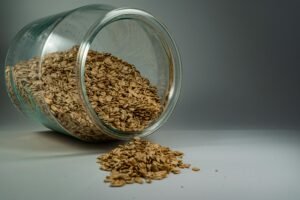Exercise Your Way to Better Blood Pressure: The Fitness Connection
High blood pressure, or hypertension, is a common yet serious health condition that can lead to severe complications if left unmanaged. Fortunately, regular physical activity is one of the most effective ways to control and lower blood pressure. This article will explore how exercise can help manage hypertension and provide practical tips for incorporating physical activity into your daily routine.
Understanding High Blood Pressure
First and foremost, it’s essential to understand what high blood pressure is and why it’s dangerous. High blood pressure occurs when the force of blood against the artery walls is consistently too high, which can lead to heart disease, stroke, and other health issues. Regular monitoring and management are crucial to prevent these complications.
The Role of Exercise in Lowering Blood Pressure
Exercise is a powerful tool in managing high blood pressure. Physical activity helps to strengthen the heart, enabling it to pump blood more efficiently, which reduces the pressure on the arteries. Moreover, exercise can help with weight management, stress reduction, and overall cardiovascular health.
Types of Exercise That Lower Blood Pressure
1. Aerobic Exercise
Aerobic exercises, such as brisk walking, jogging, cycling, and swimming, are particularly effective in lowering blood pressure. Aim for at least 150 minutes of moderate-intensity aerobic activity or 75 minutes of vigorous activity per week.
2. Strength Training
Incorporating strength training into your routine can also be beneficial. Activities like weight lifting and resistance band exercises help build muscle mass and improve overall fitness. Aim to include strength training exercises at least two days per week.
3. Isometric Exercises
Interestingly, isometric exercises, which involve contracting muscles without movement (e.g., planks, wall sits), have been shown to effectively lower blood pressure. These exercises are low-intensity and can be a great addition to your fitness routine.

Practical Tips for Getting Started
1. Start Slowly
If you’re new to exercise or haven’t been active for a while, start slowly. Begin with short, manageable sessions and gradually increase the duration and intensity. For example, start with a 10-minute walk and gradually build up to 30 minutes.
2. Make It Enjoyable
Find activities you enjoy to make exercise a regular part of your routine. Whether it’s dancing, hiking, or playing a sport, enjoying your workout increases the likelihood of sticking with it.
3. Mix It Up
Variety keeps your workouts interesting and reduces the risk of injury. Combine aerobic exercises, strength training, and flexibility exercises like yoga to create a balanced fitness routine.
4. Stay Consistent
Consistency is key to reaping the benefits of exercise. Aim to be active most days of the week and make physical activity a regular part of your lifestyle.
Additional Benefits of Exercise
In addition to lowering blood pressure, regular exercise offers numerous other health benefits:
- Improved Heart Health: Strengthens the heart and improves circulation.
- Weight Management: Helps maintain a healthy weight, which is crucial for blood pressure control.
- Reduced Stress: Physical activity can lower stress levels, which can positively impact blood pressure.
- Enhanced Mood: Exercise releases endorphins, which can improve mood and reduce symptoms of depression and anxiety.
For more information on creating a balanced diet to complement your exercise routine, check out our article on healthy diet plans.

Conclusion
In conclusion, regular exercise is a highly effective way to manage and lower high blood pressure. By incorporating a mix of aerobic, strength, and isometric exercises into your routine, you can significantly improve your cardiovascular health and overall well-being. Remember, consistency and enjoyment are key to maintaining a successful exercise regimen.
Disclaimer
This article is for informational purposes only and does not constitute medical advice. Always consult with a healthcare professional before starting any new exercise program, especially if you have pre-existing health conditions.
Content Sources
- American Heart Association
- National Institutes of Health
- Columbia University Irving Medical Center
- HonorHealth
- Mayo Clinic















